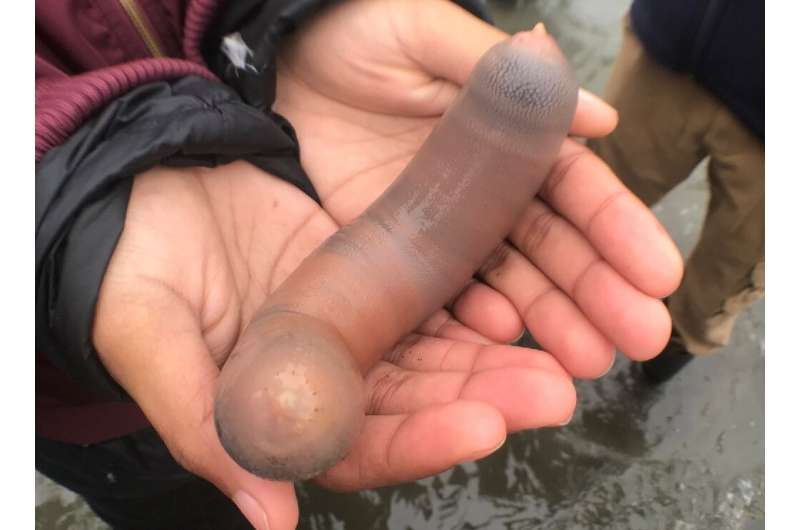Thousands of 'penis fish' exposed on California beach

Thousands of marine worms dubbed "penis fish" for their shape and color appeared this week on a California beach after a strong winter storm exposed them.
The creatures—more commonly known as fat innkeeper worms—covered Drakes Beach, 50 miles north of San Francisco.
Despite their eye-catching appearance, the pulsating worms which reach around 10 inches are adept at digging U-shaped burrows on beaches and marshes, using the tunnels to catch food.
Found almost exclusively in California, they are themselves considered a culinary delicacy in South Korea, with reputed aphrodisiac effects.
"Yes, the physical design of the fat innkeeper worm has some explaining to do," wrote biologist Ivan Parr. "But the fat innkeeper is perfectly shaped for a life spent underground."
Parr explained in a column on the Bay Nature website this week that fossil evidence of the animals dates back at least 300 million years.
"They are preyed on by otters, flounders, sharks, rays, gulls, and humans," the latter of whom eat them as sashimi, fried or grilled.
In this case the worms were caught out by heavy rain.
"We're seeing the risk of building your home out of sand," noted Parr.
"Strong storms... are perfectly capable of laying siege to the intertidal zone, breaking apart the sediments, and leaving their contents stranded on shore.
The beach is named after Francis Drake, who is believed to have landed here in 1579 during his circumnavigation of the globe.
© 2019 AFP



















